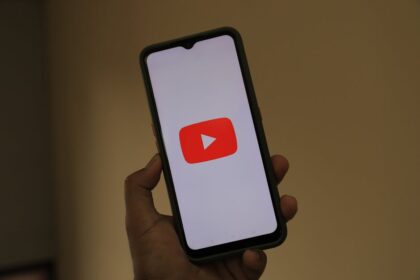Optimizing Content for Mobile Readership
The digital landscape has unequivocally shifted. Mobile devices are no longer secondary access points; for a vast majority of the global population, they are the primary, and often sole, means of interacting with the internet. This fundamental change necessitates a complete re-evaluation of how content is created, presented, and optimized. Mobile readership isn’t just about shrinking a desktop page; it’s about understanding distinct user behaviors, technological constraints, and evolving expectations to deliver an experience that is not merely functional, but truly engaging and effective.
Understanding the Mobile Readership Landscape
The prevalence of mobile devices defines the modern user journey. From smartphones to tablets, these portable powerhouses facilitate internet access anytime, anywhere. This “always-on” connectivity has forged a specific set of user behaviors and expectations that content creators must address.
Mobile-First World: Device Penetration and Primary Access
Statistics consistently show that mobile devices account for the majority of global web traffic, often exceeding 60% and in some regions, upwards of 80%. For many, a smartphone is their only internet-enabled device, underscoring its role as the primary conduit for information, communication, and commerce. This ubiquity means that content not optimized for mobile inherently excludes a significant, if not dominant, portion of its potential audience. Google’s formal adoption of mobile-first indexing cemented this reality: the mobile version of a website’s content is now the primary determinant for its ranking in search results. This isn’t a suggestion; it’s a mandate for SEO and content strategy.
User Behavior: Attention Spans, On-the-Go Consumption, Multi-tasking, Context, and Touch
Mobile users are fundamentally different from their desktop counterparts. Their engagement patterns are shaped by several key factors:
- Shorter Attention Spans: Mobile users often consume content in quick bursts, during commutes, waiting times, or short breaks. They scan rather than read in depth, seeking immediate value. Content must be digestible and deliver its core message swiftly.
- On-the-Go Consumption: Content is accessed while walking, traveling, or moving between locations. This means varying network conditions, external distractions, and often, the need for one-handed interaction. Speed and simplicity are paramount.
- Multi-tasking: Mobile users frequently juggle multiple activities simultaneously – watching TV, talking, or engaging in other digital tasks. Content needs to be easy to grasp without requiring undivided attention.
- Contextual Use: The specific environment influences mobile content consumption. A user searching for a local restaurant on the go will have different needs than someone researching a complex topic at home. Location-aware content and immediate utility become crucial.
- Touch Interaction: Unlike mouse and keyboard input, mobile interaction is predominantly touch-based. This requires larger, easily tappable elements, sufficient spacing, and intuitive gestures. Precision is lower with touch, demanding more forgiving design.
Expectations: Speed, Ease of Use, and Relevant Content
Mobile users have an exceptionally low tolerance for friction. Their expectations are sky-high:
- Speed: Pages must load almost instantaneously. Every second of delay leads to a significant drop-off in user engagement and conversions. Google’s Core Web Vitals directly measure this, impacting search rankings.
- Ease of Use: Navigation must be intuitive, forms simple, and information readily accessible. Complex layouts, cluttered interfaces, or endless scrolling deter users.
- Relevant Content: Given the limited screen real estate and attention spans, content must immediately address the user’s intent. Irrelevant information is quickly dismissed.
Google’s Stance: Mobile-First Indexing and Core Web Vitals
Google’s shift to mobile-first indexing implies that the search engine primarily uses the mobile version of your website for ranking and indexing. If your mobile site lacks content present on your desktop version, or loads slowly, it directly harms your SEO performance. Furthermore, Google’s Core Web Vitals (Largest Contentful Paint, First Input Delay, Cumulative Layout Shift) are direct measurements of user experience, with a heavy emphasis on mobile performance. Achieving good scores in these metrics is vital for search visibility and user retention.
Technical Foundations for Mobile Content Optimization
Effective mobile content optimization begins with a robust technical framework. Without a solid technical base, even the most compelling content will fail to deliver an optimal mobile experience.
Mobile-First Indexing Deep Dive: What it Means, Practical Implications for Content Creators
Mobile-first indexing means Googlebot primarily crawls and indexes the mobile version of your site. This has profound implications:
- Content Parity: The most critical implication is that your mobile site must contain all the content (text, images, videos, structured data) that your desktop site has. If your mobile version is a stripped-down version, Google will index the less comprehensive mobile content, potentially missing valuable keywords and context, leading to lower rankings.
- Metadata Consistency: Titles, meta descriptions, and other meta tags should be consistent across desktop and mobile versions.
- Structured Data: Ensure any schema markup applied to your desktop site is also present and correctly implemented on your mobile version. Structured data helps Google understand your content better and can lead to rich snippets in mobile search results.
- Link Equity: Internal and external links should be maintained on the mobile version. If links are omitted on mobile, their SEO value is lost.
- Performance Metrics: The performance (loading speed, interactivity, visual stability) of your mobile site directly impacts your search ranking. Desktop performance is less relevant for indexing purposes.
Practical implications include regularly auditing your mobile site for content parity, checking Google Search Console’s mobile usability report, and prioritizing mobile performance fixes.
Page Speed as a Paramount Factor
Speed is not merely a convenience; it’s a fundamental requirement for mobile users and a critical SEO ranking factor. Slow-loading pages lead to high bounce rates and frustrated users.
- Core Web Vitals Explained in Detail:
- Largest Contentful Paint (LCP): Measures when the largest content element (image, video, block of text) on the page becomes visible. A good LCP score is under 2.5 seconds. This is crucial for initial user perception of speed.
- First Input Delay (FID): Measures the time from when a user first interacts with a page (e.g., clicks a button, taps a link) to when the browser is actually able to process that interaction. A good FID is under 100 milliseconds. This speaks to the page’s interactivity.
- Cumulative Layout Shift (CLS): Measures the sum total of all unexpected layout shifts that occur during the entire lifespan of the page. A good CLS score is under 0.1. Unexpected shifts (e.g., images loading and pushing text down) are incredibly frustrating on mobile.
- Server Response Time, CDN, Caching:
- Server Response Time: The time it takes for your server to respond to a request. Optimize your server, database queries, and choose a reliable hosting provider.
- Content Delivery Network (CDN): Distributes your content (images, CSS, JS) across multiple servers globally. When a user requests your page, content is served from the geographically closest server, significantly reducing latency.
- Caching: Stores frequently accessed data so it doesn’t need to be re-generated for every request. Browser caching (client-side) and server-side caching (e.g., WordPress plugins, Redis) are vital.
- Minification (CSS, JS, HTML): Removing unnecessary characters (whitespace, comments, line breaks) from code files without altering functionality. This reduces file sizes, leading to faster download times.
- Eliminating Render-Blocking Resources: CSS and JavaScript files can block the browser from rendering content until they are fully downloaded and parsed.
- CSS: Use
mediaattributes for non-critical CSS, inline critical CSS, and defer non-critical CSS. - JavaScript: Defer non-critical JS by adding
deferorasyncattributes to script tags. Place JS at the end of thetag.
- CSS: Use
- Lazy Loading: Images and videos that are “below the fold” (not immediately visible when the page loads) should be lazy-loaded. This means they only load when the user scrolls them into the viewport, significantly reducing initial page load time. Implement using the
loading="lazy"attribute or JavaScript.
Responsive Design: The Gold Standard
Responsive web design (RWD) is Google’s recommended approach for mobile optimization. It means your website adapts its layout and content to fit different screen sizes and orientations from a single codebase.
- Breakpoints, Fluid Grids, Flexible Images:
- Breakpoints: Specific screen widths at which the design changes (e.g., from desktop to tablet to mobile).
- Fluid Grids: Layouts built with percentages and
emsrather than fixed pixel widths, allowing elements to scale proportionally. - Flexible Images: Images that scale within their parent containers, preventing overflow and maintaining aspect ratios. Use
max-width: 100%andheight: auto.
- Why Responsive Beats Separate URLs or Dynamic Serving:
- Single URL: Easier for Google to crawl and index, prevents duplicate content issues, and consolidates link equity.
- Maintenance: One codebase to manage, reducing development time and effort.
- Future-Proof: Adapts to new device sizes without requiring redesign.
- Viewport Meta Tag: Essential for responsive design, instructing browsers how to control the page’s dimensions and scaling. Always include
in your.
AMP (Accelerated Mobile Pages) and PWAs (Progressive Web Apps)
These are advanced mobile optimization techniques, each serving specific purposes.
- AMP: Benefits, Limitations, Use Cases:
- Benefits: Extremely fast loading times, often served directly from Google’s cache, leading to near-instant display. Can improve mobile search visibility due to lightning bolt icon.
- Limitations: Restrictive HTML, CSS, and JS. Can be complex to implement and maintain, potentially limiting design flexibility and functionality.
- Use Cases: Primarily for static, content-heavy pages like news articles, blog posts, or recipes where speed is paramount and interactivity is minimal. Less suitable for highly interactive web applications.
- PWA: Definition, Features (Offline, Push Notifications, App-like), When to Consider:
- Definition: PWAs are web applications that use modern web capabilities to deliver an app-like user experience. They are websites but feel like native apps.
- Features:
- Offline Capability: Service Workers cache resources, allowing basic functionality even without an internet connection.
- Push Notifications: Re-engage users directly from the browser.
- App-like UI: Can be added to the home screen, launching without a browser frame.
- Fast and Reliable: Load quickly and consistently.
- When to Consider: Ideal for complex web applications (e-commerce, social media, productivity tools) where user engagement, repeat visits, and offline functionality are crucial. Provides a much richer experience than AMP.
Schema Markup for Enhanced Mobile Visibility
Structured data, implemented via Schema.org vocabulary (JSON-LD recommended), helps search engines understand the context of your content. For mobile, this is particularly valuable for generating rich snippets (e.g., star ratings, review counts, product prices, event dates) directly in the mobile search results page. These visual enhancements increase click-through rates by making your listing stand out. Examples include Article schema for blog posts, Product schema for e-commerce, Recipe schema, and LocalBusiness schema for local search.
Crafting Content for Mobile Readability and Engagement
Even with perfect technical optimization, poorly structured content will deter mobile readers. Content must be designed to be consumed effortlessly on smaller screens, acknowledging the unique reading patterns and environmental factors of mobile usage.
Typographic Excellence
Typography is foundational to readability. On mobile, where screen real estate is limited, and users often read in less-than-ideal conditions, font choices become critical.
- Font Selection: Readability, Universal Support:
- Sans-serif Fonts: Generally preferred for digital screens due to their clean lines and legibility at smaller sizes (e.g., Arial, Helvetica, Roboto, Open Sans).
- Readability First: Prioritize fonts designed for on-screen reading. Avoid overly decorative or thin fonts.
- Web-Safe Fonts vs. Web Fonts: Web-safe fonts are universally available and load instantly. Web fonts (e.g., Google Fonts, Adobe Fonts) offer more design flexibility but require loading, which can impact performance. If using web fonts, ensure they are optimized (subsetting, WOFF2 format).
- Font Size: Minimum Recommendations, Responsive Sizing (vw, em, rem):
- Body Text: A minimum of 16px (or 1em/1rem) is widely recommended for body text on mobile. Smaller fonts strain the eyes and lead to quick abandonment.
- Headings: Should be significantly larger than body text to create visual hierarchy, scaling appropriately with screen size.
- Responsive Sizing:
- Pixels (px): Fixed size, less flexible.
- Ems (em): Relative to the parent element’s font size. Good for component-based scaling.
- Rems (rem): Relative to the root HTML element’s font size. Provides more control and predictability across the entire site.
- Viewport Width (vw): Relative to the viewport’s width. Can be effective for some typographic elements but needs careful management to prevent extreme scaling.
- Line Height (Leading) and Letter Spacing (Kerning):
- Line Height: The vertical space between lines of text. For optimal readability on mobile, a line height of 1.5 to 1.75 times the font size (e.g., 16px font, 24-28px line height) is ideal. This creates “rivers of white space” that guide the eye and prevent text from feeling dense.
- Letter Spacing (Kerning): The horizontal space between characters. Default browser settings are usually sufficient. Avoid making text too condensed or too spaced out, as both can hinder readability.
- Paragraph Width (Characters per Line):
- On desktop, the ideal line length is often cited as 50-75 characters. On mobile, this needs to be adapted. Long lines on small screens force excessive horizontal eye movement, leading to fatigue. Ensure paragraphs wrap naturally and comfortably within the viewport. Responsive design handles this, but typographic settings contribute.
Visual Hierarchy and Layout
A clear visual hierarchy guides the mobile user’s eye, helping them quickly scan and comprehend information.
- Whitespace: Its Role in Reducing Cognitive Load:
- Whitespace (or negative space) is the empty space around content elements. It’s crucial on mobile.
- Breaks up content: Prevents text from looking like a daunting block.
- Improves focus: Isolates important elements, drawing attention to them.
- Enhances readability: Reduces visual clutter, making text easier to scan.
- Creates breathing room: Makes the overall design feel clean and less overwhelming.
- On mobile, generous padding around elements, spacing between paragraphs, and sufficient margins are non-negotiable.
- Headings and Subheadings: H1-H6 Structure, Semantic Use, Visual Impact:
- Semantic Structure (H1-H6): Use headings correctly for SEO and accessibility. H1 for the main topic, H2 for subtopics, H3 for sub-subtopics, and so on.
- Visual Impact: Headings should stand out distinctly from body text. Use larger font sizes, bolder weights, and potentially different colors to create clear visual breaks.
- Scannability: Headings act as signposts, allowing users to quickly grasp the content’s structure and jump to relevant sections. On mobile, where scanning is prevalent, strong headings are indispensable.
- Short Paragraphs and Sentences: Breaking Text Blocks:
- Paragraph Length: On mobile, paragraphs should be significantly shorter than on desktop – ideally 2-4 sentences max. Long paragraphs create an intimidating wall of text.
- Sentence Length: Vary sentence length but aim for conciseness. Shorter sentences are easier to parse quickly.
- Why: Reduces cognitive load, makes content more digestible in small chunks, and caters to interrupted reading sessions.
- Bullet Points and Numbered Lists: Scannability:
- Lists are powerful tools for breaking down complex information into easily digestible chunks.
- Benefits: Highly scannable, draw attention to key points, reduce text density, and simplify instructions or feature lists.
- Use Cases: Summarizing key takeaways, outlining steps in a process, listing benefits or features, or presenting a series of options.
- Bold and Italics: Strategic Use for Emphasis:
- Use bolding sparingly to highlight truly important keywords or phrases within a paragraph. Overuse dilutes its effect and can make text appear cluttered.
- Italics can be used for titles, foreign words, or slight emphasis, but they can be harder to read on mobile screens, especially at smaller sizes. Use with caution.
- Information Chunks: Micro-content Strategy:
- Break down larger pieces of content into self-contained “micro-content” units. Each unit should convey a single idea or piece of information.
- This includes short paragraphs, individual list items, concise captions for images, and clear headings.
- This strategy aids scannability and allows users to consume information at their own pace, picking up only what’s immediately relevant.
Content Tone and Style
The way you write profoundly impacts mobile engagement.
- Conciseness and Clarity: Getting to the Point Quickly:
- Mobile users are time-poor. Get to the core message quickly. Avoid verbose introductions or tangential discussions.
- Every word should add value. Ruthlessly edit for brevity.
- Active Voice: Generally clearer, more direct, and more engaging than passive voice. “The user clicked the button” (active) vs. “The button was clicked by the user” (passive).
- Conversational Tone (especially for voice search):
- Write as if you’re speaking directly to the user. This makes content more relatable and easier to understand.
- Crucially, this aligns with voice search queries, which are naturally conversational.
- Addressing the User Directly: Use “you” and “your” to create a personal connection and make the content feel more relevant to the individual.
Call-to-Action (CTA) Optimization
CTAs are pivotal for conversions. On mobile, their design and placement are even more critical.
- Placement, Size, Contrast:
- Placement: CTAs should be prominent and easily discoverable without excessive scrolling. Place them logically after relevant content segments. Sticky CTAs (at the top or bottom of the screen) can be effective if implemented non-intrusively.
- Size: Buttons must be large enough to be easily tappable with a finger (minimum 48×48 device-independent pixels, according to Google guidelines).
- Contrast: High contrast against the background ensures visibility. Use colors that stand out but remain harmonious with your brand.
- Action-Oriented Language: Use strong verbs that clearly indicate what the user should do: “Download Now,” “Learn More,” “Shop Our Collection,” “Get Started.”
- Touch Target Considerations: Ensure sufficient padding around the CTA to prevent accidental clicks on adjacent elements.
Pop-ups and Interstitials: Best Practices, Google’s Stance on Intrusive Interstitials
While effective for lead generation or announcements, pop-ups can be highly detrimental to mobile UX if not implemented carefully.
- Google’s Stance: Google penalizes “intrusive interstitials” that block content on mobile on entry or partway through the visit, making the content less accessible. This includes full-screen pop-ups that require dismissal before viewing content.
- Best Practices for Mobile:
- Non-Intrusive: Use smaller, less disruptive banners (e.g., at the top or bottom of the screen) for cookie notices, app install prompts, or promotions.
- Contextual & Timed: If you must use a pop-up, trigger it after the user has engaged with the content for a specific duration or scrolled to a certain point, indicating interest.
- Easy Dismissal: Ensure a clear, large, and easily tappable close button.
- Avoid on Load: Never show a full-screen pop-up immediately upon page load.
Navigation Optimization
Intuitive navigation is crucial for mobile users who want to find information quickly.
- Hamburger Menus, Sticky Headers:
- Hamburger Menu: The most common mobile navigation pattern. It condenses many links into a single icon (three horizontal lines). Ensure the icon is clearly visible and placed in a standard location (top-left or top-right).
- Sticky Headers: A common pattern where the main navigation (or a simplified version of it) remains visible at the top of the screen as the user scrolls. This provides persistent access to key links.
- Search Functionality: A prominent search bar or icon is essential for users who know what they’re looking for but don’t want to dig through menus.
- Breadcrumbs: For complex sites with deep hierarchies, breadcrumbs (e.g., Home > Category > Subcategory > Article) help users understand their location within the site structure and navigate back easily.
Visual Content Optimization for Mobile Screens
Visuals are critical for engagement but can be performance bottlenecks on mobile. Optimizing images and videos is non-negotiable.
Image Optimization Mastery
Images often constitute the largest portion of a page’s file size. Proper optimization is vital for mobile speed and quality.
- File Formats (WebP, JPEG 2000, AVIF):
- JPEG (JPG): Good for photographs with lots of colors and gradients.
- PNG: Best for images with transparency or sharp lines (logos, illustrations).
- GIF: For simple animations or images with limited colors.
- WebP: A modern format developed by Google that offers superior compression (often 25-35% smaller than JPEG/PNG) with no perceptible loss in quality. It supports transparency and animation. Increasingly supported across browsers.
- JPEG 2000 & AVIF: Even newer, more efficient formats offering further compression benefits. Browser support is still developing, so often used with fallback options.
- Strategy: Use WebP where supported, with JPEG/PNG as a fallback for older browsers.
- Compression Techniques:
- Lossy Compression: Permanently removes some data to reduce file size. JPEGs use this. Balance quality and file size carefully.
- Lossless Compression: Reduces file size by removing metadata without losing any image data. PNGs often benefit from this.
- Tools: Image optimization plugins (for CMS like WordPress), online tools (TinyPNG, Squoosh), or command-line tools (ImageOptim).
- Responsive Images:
srcset,sizes,element:- Problem: Serving a high-resolution desktop image to a mobile device wastes bandwidth and slows loading.
- Solution: Responsive images deliver the appropriate image size for the user’s device and viewport.
srcsetattribute: Allows you to define a set of image sources along with their intrinsic widths or pixel densities. The browser then chooses the most suitable image.
sizesattribute: Specifies the width of the image slot in the layout at different viewport sizes.element: Provides even more control, allowing you to specify different image sources for different media conditions (e.g., different image aspect ratios for mobile vs. desktop, or different image formats like WebP with a JPEG fallback).
- Lazy Loading Images:
- As mentioned in technical foundations, lazy loading defers the loading of off-screen images until they are needed.
- Implement with
loading="lazy"attribute on the
- Alt Text: Accessibility and SEO:
- Accessibility: Provides a textual description of the image for visually impaired users who use screen readers.
- SEO: Helps search engines understand the content and context of the image, improving image search rankings and overall content relevance.
- Best Practice: Be descriptive, concise, and include relevant keywords naturally.
Video Content Considerations
Video is highly engaging but presents significant challenges for mobile optimization due to its large file sizes.
- Responsive Video Embeds:
- Ensure video players and embedded videos scale proportionally to fit different screen sizes. Avoid fixed pixel dimensions that can lead to horizontal scrolling or cut-off content.
- Use CSS for fluid video containers (e.g., aspect-ratio hack or
object-fit).
- Autoplay Policies:
- Modern browsers (especially on mobile) increasingly restrict autoplay of videos with sound without user interaction.
- Best Practice: Avoid autoplaying videos with sound. If autoplay is desired, default to muted and provide a clear un-mute option. Consider allowing autoplay only for silent background videos.
- File Size and Streaming:
- Compression: Compress videos efficiently without sacrificing too much quality.
- Adaptive Bitrate Streaming: Use services (like YouTube, Vimeo, Wistia, or dedicated CDNs) that automatically deliver different video qualities based on the user’s network speed and device capabilities. This ensures a smooth experience for users on varying connections.
- Short Form: Consider breaking longer videos into shorter, digestible segments for mobile users.
- Captions and Transcripts: Accessibility, SEO:
- Accessibility: Crucial for users with hearing impairments, or for those consuming content in noisy environments or with sound off.
- SEO: Transcripts provide crawlable text for search engines, helping them understand video content and potentially rank for relevant keywords.
- Mobile-friendly Video Players: Use HTML5 video elements or embed players from services that are inherently responsive and optimized for mobile touch interactions.
Infographics and Charts: Adaptability, SVG use, Progressive Disclosure
Infographics and data visualizations can be challenging on small screens.
- Adaptability: A large, complex infographic designed for desktop may be unreadable on mobile.
- Responsive Infographics: Use SVG (Scalable Vector Graphics) for charts and simple infographics. SVGs scale perfectly without pixelation.
- Break into Chunks: For very complex infographics, consider breaking them into smaller, digestible image sections or even converting parts into interactive HTML elements.
- Progressive Disclosure: Instead of showing all data at once, present key takeaways first, then allow users to tap or expand to see more detailed data points or charts. This prevents overwhelming the mobile user.
Interactive Elements, Forms, and User Experience (UX) on Mobile
Mobile content optimization extends beyond static text and images. How users interact with your site – through buttons, forms, and gestures – profoundly impacts their experience.
Touch Target Sizing
This is a critical, yet often overlooked, aspect of mobile UX.
- Minimum Recommendations for Interactive Elements:
- Google recommends a minimum touch target size of 48 device-independent pixels (dp) for tappable elements like buttons, links, and icons.
- This provides enough area for a finger to accurately tap without accidentally hitting adjacent elements.
- Ensure there’s adequate spacing (at least 8dp) between touch targets to prevent mis-taps.
- This applies to navigation links, form fields, CTAs, social share buttons, and any other interactive elements.
Form Design for Mobile
Forms are notorious conversion blockers on mobile. Simplifying them is paramount.
- Simplified Forms: Fewer Fields:
- Every additional form field increases friction and potential abandonment.
- Only ask for absolutely essential information. Can you pre-populate fields? Can you derive data (e.g., location) automatically?
- Break long forms into multiple, short steps (multi-step forms) to reduce perceived effort. Use progress indicators.
- Input Types:
type="email",type="tel",type="date":- HTML5 input types trigger optimized on-screen keyboards for specific data entry.
type="email": Shows@and.easily.type="tel": Shows a numeric keypad.type="url": Shows/and.shortcuts.type="number": Shows a numeric keypad.type="date",type="time",type="datetime-local": Bring up native date/time pickers, which are far superior to custom JavaScript solutions on mobile.
- HTML5 input types trigger optimized on-screen keyboards for specific data entry.
- Labels and Placeholders:
- Labels: Always use clear
elements associated with their input fields (forattribute linking toid). Labels should be visible even when the field is filled, providing context. Place them above the input field on mobile to prevent them from disappearing or being cut off. - Placeholders: Can provide hints but should not replace labels, as they disappear once the user starts typing and can cause accessibility issues. Use them for examples or format guidance.
- Labels: Always use clear
- Autofill and Autocomplete:
- Enable
autocompleteattributes on form fields (e.g.,autocomplete="name",autocomplete="email",autocomplete="street-address",autocomplete="cc-number"). - This allows browsers and password managers to pre-fill information, saving users significant typing effort, especially for repeat visitors or known addresses.
- Enable
- On-screen Keyboard Management:
- Ensure that the on-screen keyboard doesn’t obscure important form fields or the “submit” button.
- The page should scroll or adjust to keep the active input field in view.
- Avoid fixed footers that cover input fields when the keyboard is open.
- Error Handling:
- Provide clear, immediate, and user-friendly error messages if a field is incorrectly filled.
- Highlight the problematic field clearly.
- Explain what is wrong and how to fix it (e.g., “Email address format is incorrect,” not just “Error”).
- Validate input as the user types, where appropriate, to provide instant feedback.
Scrolling vs. Tabbing/Clicking: Optimizing for Natural Mobile Interaction
Mobile users are accustomed to vertical scrolling.
- Embrace Vertical Scrolling: Don’t try to cram everything above the fold. Users are comfortable scrolling. The goal is to make that scroll engaging and intuitive.
- Minimize Horizontal Scrolling: Horizontal scrolling is a strong indicator of a poor mobile experience. Ensure all content fits within the viewport width.
- Strategic Use of Carousels/Sliders: While popular, use carousels sparingly and ensure they are touch-friendly, indicate progress, and allow users to swipe easily. Autoplaying carousels can be distracting.
Accessibility beyond Alt Text
Accessibility ensures your content is usable by everyone, including those with disabilities.
- ARIA Attributes: Use Accessible Rich Internet Applications (ARIA) attributes to provide semantic information where native HTML elements are insufficient (e.g., for custom widgets, tabs, or accordions).
- Color Contrast: Ensure sufficient color contrast between text and background for readability, especially for users with visual impairments or in bright outdoor conditions. Use contrast checkers.
- Keyboard Navigation Simulation: While mobile is touch-centric, some users might still rely on external keyboards or assistive technologies that simulate keyboard navigation. Ensure all interactive elements are reachable and operable via logical tab order.
Local SEO and Mobile
Mobile is intrinsically linked to local search. Users frequently search for local businesses on their phones.
- Map Integration: Embed interactive maps (e.g., Google Maps) for easy navigation to your physical location.
- Click-to-Call Buttons: Prominently display phone numbers with direct click-to-call functionality (
tel:link). - NAP Consistency: Ensure your Name, Address, and Phone number (NAP) are consistent across your website, Google My Business profile, and other online directories. This is crucial for local pack rankings.
User Testing and Analytics
Optimization is an ongoing process that requires data-driven decisions.
- Mobile-Friendly Test, Lighthouse Audits:
- Google’s Mobile-Friendly Test: A quick tool to check if Google considers your page mobile-friendly.
- Google Lighthouse: An automated open-source tool built into Chrome DevTools. It audits performance, accessibility, best practices, SEO, and PWA metrics, providing actionable recommendations for mobile optimization. Run it regularly.
- Google Search Console Mobile Usability Report: This report identifies specific mobile usability errors on your site (e.g., small font sizes, too close clickable elements, content wider than screen).
- Google Analytics Mobile Traffic Reports, Bounce Rate, Conversion Rates:
- Traffic: Analyze mobile traffic trends.
- Bounce Rate: High bounce rates on mobile often indicate poor UX or slow loading.
- Conversion Rates: Compare conversion rates between desktop and mobile. Lower mobile conversions pinpoint areas needing optimization.
- Heatmaps and Session Recordings: Tools like Hotjar or Crazy Egg visually show how users interact with your mobile site (where they tap, scroll, get frustrated). Session recordings allow you to watch actual user journeys. This qualitative data is invaluable for identifying usability issues that quantitative data might miss.
The Future of Mobile Content Optimization
The landscape of mobile readership is dynamic, influenced by technological advancements and evolving user expectations. Staying ahead requires anticipating future trends.
5G and Richer Media
The widespread rollout of 5G networks promises significantly faster mobile internet speeds and lower latency. This will enable:
- Even Richer Media: Higher quality video, more interactive elements, and immersive experiences will become standard without compromising load times.
- More Complex PWAs: PWAs will become even more indistinguishable from native apps, capable of handling more sophisticated tasks directly in the browser.
- Real-time Interactions: Live streaming, real-time collaboration tools, and instant data synchronization will become smoother and more reliable.
- Impact on Content: Content creators will have more freedom to incorporate heavy, high-fidelity media, but the core principles of optimization (efficient delivery, good UX) will remain.
AI and Personalization
Artificial intelligence is already reshaping how content is delivered and consumed.
- Hyper-Personalization: AI algorithms will become even more adept at understanding individual user preferences, behavior, and context (location, time of day, device usage). Content will be dynamically tailored in real-time to match these granular insights.
- Content Curation: AI-powered systems will curate and recommend highly relevant content, presenting it in the most digestible format for the mobile user.
- Automated Content Summarization: AI could automatically generate concise summaries or key takeaways of longer articles, specifically for mobile users who prefer quick consumption.
- Adaptive Content: Content components might dynamically rearrange or display based on the user’s current engagement level or device capabilities.
Voice Search Evolution
Voice search is evolving beyond simple queries to more complex, multi-turn conversations.
- Conversational Interfaces: Mobile content will need to be optimized for conversational AI, with content structured to directly answer questions and flow naturally.
- Featured Snippets and Zero-Click Searches: Voice search heavily relies on featured snippets and direct answers. Content strategies must focus on providing precise, concise answers to common questions.
- Multimodal Search: Combining voice input with visual results on mobile screens will become more common, requiring content to be optimized for both auditory and visual presentation.
Foldable Phones and Adaptive Interfaces
The emergence of foldable phones introduces new form factors and screen sizes.
- Fluid Layouts: Responsive design principles will need to be even more robust to gracefully handle transitions between folded (smaller screen) and unfolded (larger, tablet-like screen) states.
- Contextual UI: Interfaces might adapt not just to screen size, but also to the physical state of the device (e.g., “tent mode” for video viewing).
- Multi-window Experiences: Foldables enable true multi-window multitasking, requiring content to function effectively when sharing screen space with other applications.
Augmented Reality (AR) Content
AR experiences, once niche, are becoming more accessible on mobile devices.
- Immersive Content: Content could integrate AR elements, allowing users to interact with 3D models, try on products virtually, or overlay digital information onto the real world through their phone cameras.
- Interactive Storytelling: AR could be used for immersive storytelling, where content comes alive in the user’s environment.
- Optimization Challenge: Delivering rich AR content will demand highly optimized 3D assets, efficient rendering, and robust device performance, pushing the boundaries of mobile optimization.
The core tenets of speed, readability, and user experience will always remain at the heart of mobile content optimization. However, the methods and technologies employed to achieve these goals will continuously evolve, demanding ongoing adaptation and innovation from content creators and web developers alike. The future of mobile readership is an exciting frontier, characterized by increasing personalization, richer interactions, and seamless integration into the user’s daily life.










